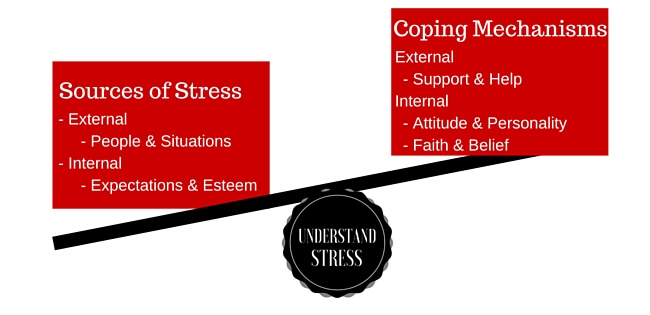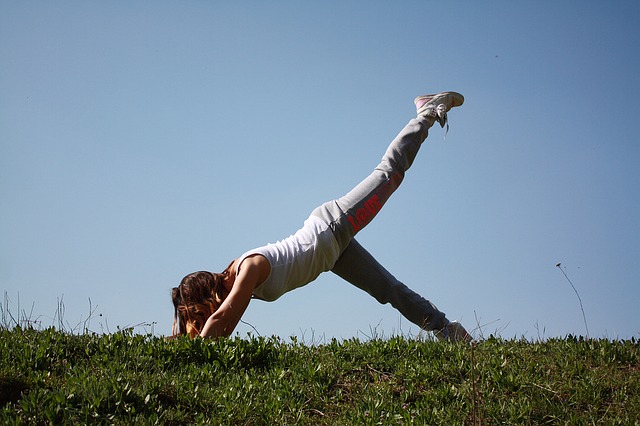Yoga and Stress – Reaching for Stress-free Living

YOGA and STRESS
We have all heard about how stress can be bad for the body but did you know just how bad?
An individual’s state of happiness is often directly related to the amount of stress present in that person’s life and perhaps more importantly, how well they cope with it.
Stress may be caused by many different reasons; the main ones though are relationship problems, work pressures, family or intimately personal matters. Any form of post traumatic distress qualifies strongly too.
Yoga can assist greatly in alleviating stress and many other chronic disorders such as diabetes, cardio-vascular disease, high blood pressure, decreased mobility and the like.
So, let’s leave the misconceptions aside – i.e., yoga being religion-based, requires optimal flexibility etc. and rather consider the fact that anyone can practice yoga, irrespective of age, their chosen faith or fitness level.
Stress and the body
Stress is caused by demands being made on you. The two main groups being external demands (made by other people and situations) and internal demands (your expectations of self and others).
This is where your coping abilities come into play.
Again, there are externals and internals, the external ones being support or assistance which may be offered to you and the internal ones being your own coping skills, which could encompass personal strengths and qualities e.g., faith, tolerance or perhaps a predominantly positive attitude.
When the demands side is balanced by the coping side then your stress is manageable in a comfortable fashion.

Danger comes when our level of stress exceeds our coping capabilities.
At root level the cause of stress needs to be discovered and dealt with. There is no point in running from the cause of the problem as failure in facing and dealing with issues in one’s life, very often lead to vast unhappiness and unpleasant physical symptoms along with other varied and combined health problems.
Severe and prolonged stress can also lead to debilitating depression.
Note: It is an on-going and prolonged accumulation of events which have not been coped with in an adequate manner which leads to stress.
Fight or Flight
This state (fight or flight), is our bodies automatic defence mechanism when it goes into ‘survival mode’. It is similar to constantly pressing a panic button to gear up for an emergency situation i.e. ‘fight or flight’. These are instinctive actions and date back to pre-historic times when man had to hunt to survive along with braving the elements.
The body reacts by releasing hormones e.g. adrenalin ( the ‘action’ hormone) and bodily fluids are re-directed into the blood stream, which allows the blood to flow where it is most needed, both the heart and lung functions accelerate and the liver starts to release stored energy..
Through these changes in the body, we experience heightened levels of energy and strength, reactions become faster, along with clarity of thought.
Whilst this is useful during a truly stressful situation, they can also produce uncomfortable side effects on the body i.e. dry mouth, a pounding heart and pulse, a feeling of breathlessness, muscle tension and even a feeling of exhaustion.
In today’s modern world most stress responses are not due to physical danger, but more to a threat to our well-being or perceived sense of happiness, along with the unpleasant conclusion that we don’t know how or are ill equipped to deal with the situation.
It stands to reason that if the bodily panic button is pushed too frequently, with no chance or rest or recovery in-between, that the physiological changes start to build up, layer upon layer.
The consequences may be mild at first but sadly become progressively more serious as time passes by,
For the unfortunate ones among us, repeated and prolonged stress can be a fundamental cause of both physical and even mental breakdown.
Yoga & Stress Relief
Yoga is a great stress reliever. The focus on breathing, the mild to moderate exercise and a sense of presence, all add up to reduced stress levels and a feeling of well-being.
 Yoga breathing shows us the correct way to breathe, which is slowly and deeply. It increases the capacity of the lungs which in turn brings additional oxygen to the blood, thereby enhancing its function. This changes the flow of key chemicals in the brain and with controlled breathing comes serenity and peace of mind.
Yoga breathing shows us the correct way to breathe, which is slowly and deeply. It increases the capacity of the lungs which in turn brings additional oxygen to the blood, thereby enhancing its function. This changes the flow of key chemicals in the brain and with controlled breathing comes serenity and peace of mind.
Yoga is indeed a ‘breath of fresh air” – Inhale – Exhale…..
Other benefits of practicing yoga include elimination of wastes and toxins from the system, improved digestion, sharpened concentration and focus.
Another, rather unique benefit of yoga is the balancing of the nervous and endocrine systems, which directly influence all other organs of the body.
The more physical side of yoga is based on strength training and flexibility. Postures strengthen the body from the inside-out, so you don’t just look good, you start to feel good too.
It is good to remember that most of the yoga poses reinforce the muscles around the spine, which is the very centre of your body; this is the core from which everything else operates. A strong core is extremely beneficial for those suffering from back shoulder and neck pain, which are ailments very often contributed to sitting behind a desk working on a computer.
Modern technology is wonderful but a stiff back is really no laughing matter!
The most important benefit of yoga is that it is a combined physical and mental therapy, one which transcends body, mind and spirit.
Look to Yoga as a lifestyle i.e., healthy and harmonious and sometimes even playful.
After all, how many adults get to pose like a ‘Warrior’ or stand on one leg and pretend to be a tree?
It is also rumoured that is vastly improves ones sex –life.
Just Sayin’………..